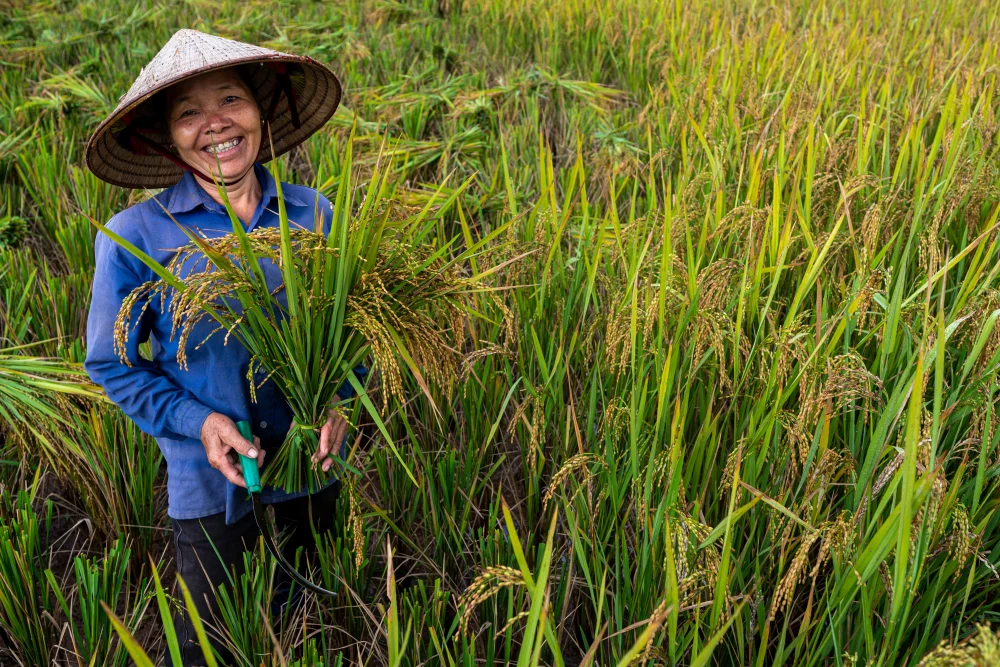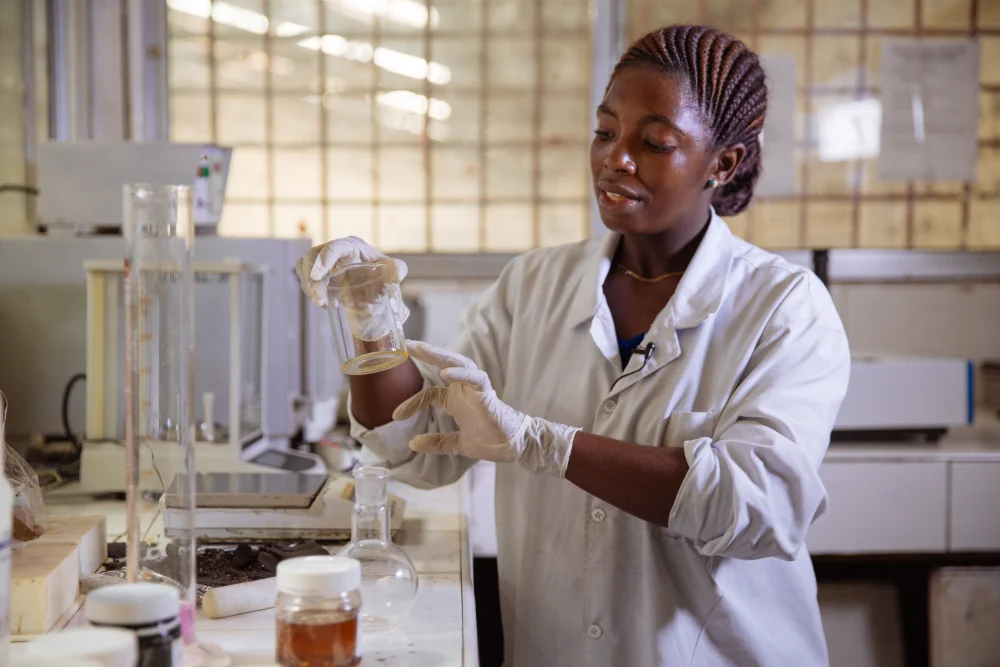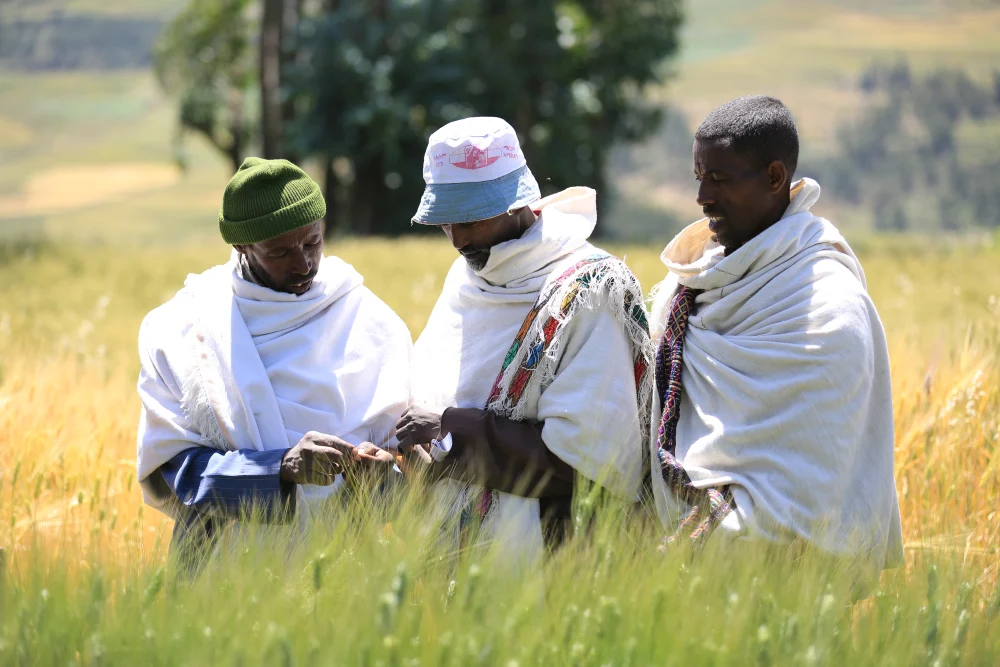Welcome to CGSpace
Identify, locate and download research and other outputs produced across CGIAR and its partners.
Content is organized in communities and collections and includes outputs from CGIAR’s current research and innovation portfolio, outputs of CGIAR research centers and hosted content of other organizations and programs. Read more about the content we hold.
Our Research Collections
Research Themes
Recent Submissions
test limit access
(Journal Article, 2025-01-22) Irigoin, Victor; Pizarro, Dante; Fuentes, Eduardo; García, Carlos; Wattiaux, Michel; Picasso, Valentín; Arango-Mejia, Jacobo; Romero, Gelver; Gómez-Bravo, Carlos
SAKAFO FENO ny BAgeda Miaty Laoranjy BAMILA (ahitana hery fiasana sy hery fiarovana no sady misy Vitaminy A) afangaro amin’ny karazan-tsakafo
(Brief, 2025) International Potato Center
Combating aflatoxin contamination by combining biocontrol application and adapted maize germplasm in northeastern and southeastern Mexico
(Journal Article, 2025-05) Muñoz-Zavala, Carlos; Molina Macedo, Aide; Toledo, Fernando H.; Telles Mejía, Eugenio; Cabrera-Soto, Luisa; Palacios-Rojas, Natalia
Maize is highly vulnerable to aflatoxin (AF) contamination caused by fungi from the Aspergillus section Flavi, with deficiencies in post-harvest management practices further exacerbating AF levels. Due to their carcinogenic properties, AFs pose significant health risks. Biological control using non-aflatoxigenic A. flavus isolates has been effective for over 25 years in the USA, with two formulations being commercially available. However, no such products have been developed yet for use in Mexico. This study evaluated the effectiveness of AF36-Prevail®, a non-aflatoxigenic strain from Arizona, for reducing aflatoxin contamination in Mexico. Over four years (2019–2022), we assessed its impact alongside regionally adapted maize germplasm in northeastern and southeastern Mexico. We analyzed a total of 1,479 grain samples, with 887 from biocontrol-treated fields, and 592 from untreated fields across 69 sites in Tamaulipas and Campeche. Treated fields showed 59.0 % to 89.9 % reductions in AF content compared to untreated fields, and higher ear rot was observed in untreated fields. Correlation coefficients between ear rot and AF content were r = 0.08 for Campeche and r = 0.36 for Tamaulipas. Significant differences (p ≤ 0.001) were noted between years and hybrids for both yields and AF levels. Three hybrids in Tamaulipas and four in Campeche demonstrated better adaptation, higher yields, and lower AF levels (< 20 ppb). This research underscores the potential for safer maize production in Mexico, particularly when combining biocontrol strain application with adapted germplasm.
Detection of Fall Armyworm infestation in maize fields during vegetative growth stages using temporal Sentinel-2
(Journal Article, 2025-05) Dzurume, Tatenda; Darvishzadeh, Roshanak; Dube, Timothy; Amjath Babu, T.S.; Billah, Mutasim; Syed Nurul Alam; Kamal, Mustafa; Md. Harun-Or-Rashid; Biswas, Badal Chandra; Md. Ashraf Uddin; Md. Abdul Muyeed; Md Mostafizur Rahman Shah; Krupnik, Timothy J.; Nelson, Andrew
Fall Armyworm (FAW), Spodoptera frugiperda (J.E. Smith) (Lepidoptera: Noctuidae), poses a significant risk to global food and income security by attacking various crops, particularly maize. Early detection and management of FAW infestation are crucial for mitigating its impact on crop yields. This study investigated the effect of FAW infestation on the spectral signature of maize fields and classified infestation severity in Bangladesh using Sentinel-2 satellite imagery and Random Forest (RF) classification. Field observations on FAW infestation severity (none, moderate, and severe), collected by the Bangladesh Department of Agricultural Extension during 2019 and 2020, were used to train the RF classifier. Six thousand nine hundred ninety-eight observations were collected from 579 maize fields through weekly scouting. The Kruskal-Wallis test and Dunn’s post-hoc test were applied to identify the most significant spectral bands (P < 0.05) for detecting FAW incidence and severity across different maize growth stages. The results demonstrated that the spectral reflectance from Sentinel-2 bands varied significantly among different classes of FAW infestation, with noticeable differences observed during the early developmental stages of maize (vegetative growth stages 3 to 8). RF identified nine spectral bands and two spectral vegetation indices as important for FAW infestation discrimination. The RF classifier was evaluated using five-fold cross-validation, achieving an overall accuracy between 74 % and 84 %. The independent test set’s accuracy ranged from 72 % to 82 %. The mean multiclass AUC ranged from 0.83 to 0.95. Moreover, the results demonstrated the feasibility of detecting the severity of FAW infestation using temporal Sentinel-2 data and machine learning techniques. These findings underscore the potential of remote sensing and machine learning techniques for effectively monitoring and managing crop pests. The study provides valuable insights for classifying FAW infestation using high-resolution multitemporal data.
Smallholder farmer insights on information systems: current use and future needs in the Eastern Gangetic Plains
(Journal Article, 2025) Karki, Emma S.; Karmacharya, Saurya; Ghosh, Arunava; Rana, Gunjan; Chakma, Kali Ratan; Timsina, Pragya; Chaudhary, Anjana; Nandi, Ravi
Purpose: The Eastern Gangetic Plains (EGP) region is characterized by resource-poor smallholder farmers, high dependence on agriculture, poor market infrastructure, limited access to new technologies, and frequent climate aberrations. These challenges underscore the need for a robust agricultural information system to enhance food security and agricultural productivity. Methodology/Approach: This study examines current access to existing information channels and identifies preferences for future information delivery and dissemination mechanisms from the perspective of small holder farmers in the Eastern Gangetic Plains (EGP) through empirical data collected from 1,440 households in India, Nepal and Bangladesh. Findings: Results from all locations indicate (i) heavy reliance on informal sources like agrovets and village peers in the absence of a robust extension system, (ii) strong preference for more formal, government-driven information sources (iii) need for a pluralistic approach to information dissemination, integrating public, private, and community-based sources to meet diverse farmer needs and (iv) training was the most preferred method of information dissemination. Practical implications: The results advocate for policy changes and the development of inclusive, innovative extension systems to better serve smallholder farmers, ensuring improved access to valuable information and fostering agricultural development in the EGP. Theoretical implications: This study contributes to the literature on farmer's current and future preferences for both agricultural and off-farm activities in the EGP highlighting the role of pluralistic agriculture extension. Value: This paper addresses a gap in literature by examining the perceptions of smallholder farmers on their current and future information sources for agricultural and off-farm activities in the EGP, a region that lacks literature regarding information systems.



